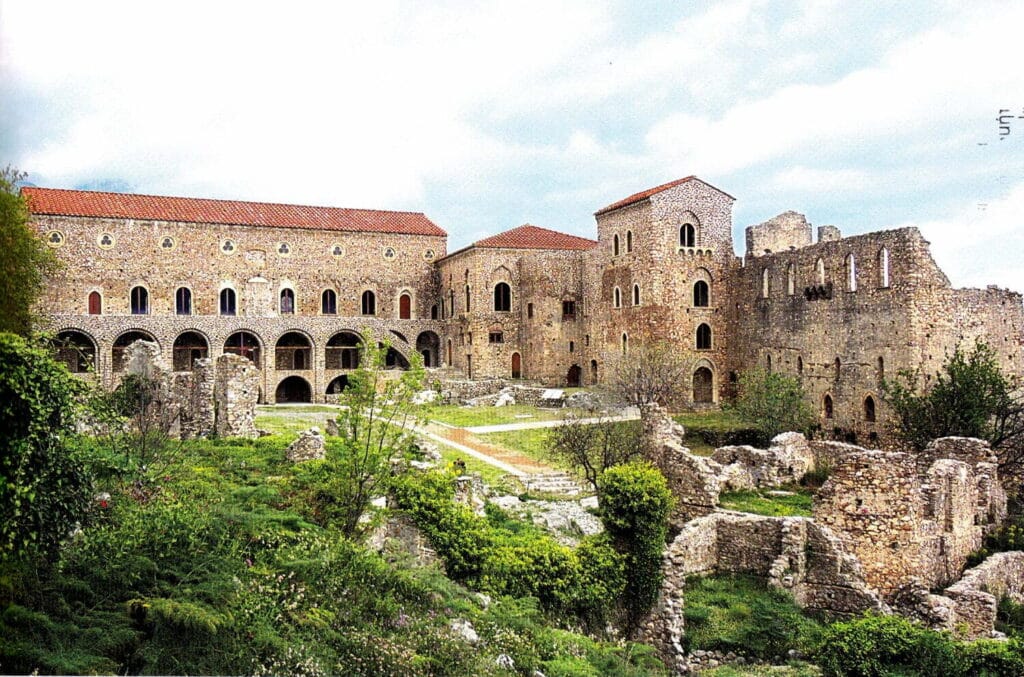Mystra Day Tour
- 9-10 Hours
- 1-11 People
- By Vehicle
- Private Tour
Mystra Day Tour
Mistra, also known as Mystra, was one of the most significant cultural and political centers of the late Byzantine Empire and served as the capital of the Despotate of Morea.
Located just 5 kilometers from Sparta, Mistra offers a journey back in time. On your way, you can pause for a brief café stop before visiting the monument to Leonidas in Sparta. Then, head toward Mistra, once a flourishing Byzantine city filled with churches, monasteries, palaces, and grand mansions, often referred to as the “Byzantine Pompeii.” Built to defend against raids by rebellious Greeks and Slavs, the ruler of the Achaean principality ordered the construction of a fortress on a hill, now known as Mistra. This fortress strategically controlled the gorge linking Laconia with Messenia. Today, only the majestic ruins remain.
Founded in 1249 by the Franks after the Fourth Crusade, the knight Guillaume de Villardouin selected the hill of Myzithra to build his castle, which overlooked the valley of Sparta and was protected from behind by the imposing Taygetus Mountains. Under the fortress’s protective walls, a city grew, consisting of the Lower City, Upper City, and the citadel.
Mistra is a one-of-a-kind monument and the only Byzantine city in Greece that has survived to this day. Its buildings were scattered across the slopes, adapting to the landscape and the needs of its residents. Over 2,000 structures form a picturesque ensemble interspersed with monasteries, churches, and palaces—a living record of the Frankish, Byzantine, and Ottoman periods that tells the unique story of Mistra.
The seven main churches of Mistra are especially impressive, made from stone with tiled roofs. The city showcases all the primary architectural types of Greek churches from the 11th-12th centuries, and the architecture of Mistra’s secular buildings is of exceptional rarity.
Mistra was not only a political hub but also the cultural heart of the Byzantine world, renowned for its contributions to art and science. The city was home to many of the era’s greatest scholars and theologians, including the famous philosopher Gemist Plethon, who revived the teachings of Plato.
The crown jewel of Mistra is the Palace of the Despots, where local rulers once lived. The right wing of the palace was home to the Cantacuzene family, while the left wing was added by the Palaiologos family in the 15th century. The palace ruins now rise dramatically above a cliff in the northern part of the Upper City. Many of the townspeople’s homes were two- to three-story stone buildings with brick and ceramic details, adding to the city’s architectural charm. Today, Mistra stands as a “dead city,” locked at night and shrouded in silence, except for the occasional ringing of bells calling the nuns to evening prayer.

The Corinth Canal is a remarkable man-made waterway in Greece, connecting the Gulf of Corinth in the Ionian Sea to the Saronic Gulf in the Aegean Sea. It slices through the narrow Isthmus of Corinth, effectively separating the Peloponnese from the Greek mainland, and in doing so, it almost turns the peninsula into an island.


Includes
All taxes, fees and handling charges
Hotel pickup and dropoff
Fuel and tolls
Water
Personal English-Speaking Driver
Not Included
Entrance fees for all attractions
Tips and gratuities
Meals.